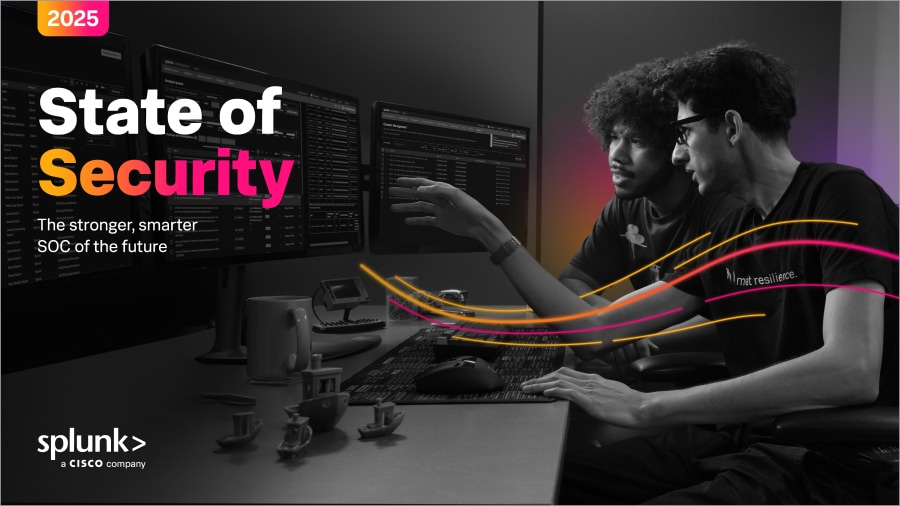Power to the People: How AI and 5G Will Democratize Cyberwar

The concept of cyberwarfare is nothing new, and it shows no signs of slowing down in 2024. Technological trends such as generative AI will almost certainly give cyberwarfare a new shape, as well as a few new clever variations on previous attack methods.
Our Splunk 2024 Security Predictions Report outlines the many ways that Generative AI (genAI) will revolutionize technology environments. But what can be used for great good, can also be used for great evil. Here are a few ways that these new cutting-edge technologies will likely be used for ill on a global scale in the upcoming year.
Generative AI boosts wartime disinformation
Generative AI levels the playing field in just about any industry. So it’s safe to surmise that threat actors will also heavily rely on AI to militarize cyber threats in pursuit of their political aims. One of the most visible, and perhaps powerful, ways will be in potential widespread disinformation campaigns with mass-distributed deep fakes that depict images designed to invoke fear, confusion or other galvanizing emotions — or appear to originate from respected media outlets.
“Unfortunately, disinformation has become a critical component of national conflict,” says Mike Horn, SVP and GM of security. “With a U.S. election year coming up, we’ll see more misinformation and targeted hacking on different organizations.”
That disinformation will likely happen at a much faster clip over the next year or two — and to much broader audiences — especially as larger groups of people are able to access generative AI tools. Less technologically sophisticated threat actors and nations have a lower barrier to entry for launching disinformation campaigns, opening the floodgates for less experienced hackers to enter the cyber underworld, and adding a new dimension to current cyberwarfare tactics on a global scale.
But it won’t just be lower skilled or commodity threat actors taking advantage of new AI tools. With more than 60 national elections either occurring now or on the horizon, along with ongoing global conflicts and upheaval, more regimes will use AI to explore ways to execute politically motivated attacks, hacktivism, and sabotage.
Massive digital disinformation campaigns that accompany physical warfare is a trend that’s rapidly escalating. We’re already seeing this happen with the conflict in Israel and Gaza. And not just against military targets, but against soft targets — as opposed to attacks in the traditional sense that would, for example, just bring down a power plant. If anything, the role of cyberwarfare in current global conflicts has shown us the direction in which we believe more military activities will take place — and serve as a harbinger of what’s to come.
2024 opens new doors for threat actors
While cyberwarfare conjures thoughts of geo-political, cross-border conflicts, that is only one aspect. Other types of cyber assaults may include ongoing commercial and economic disinformation campaigns, with more targeted attacks against companies’ brands and reputations.
The impact of generative AI has been immediate, sparking conversations about its ability to increase resilience in organizations of all sizes. While defenders are leveraging AI to increase security posture, attackers are leveraging the same technologies for illicit gain.
AI won’t be the only tool opening the door to new cyberthreats — 5G will also present opportunities for cybercriminals by expanding the attack surface in ways that aren’t yet protected. “I see new threats in 5G, given there’s going to be more data at the edge. Data and software will become more intertwined, potentially complicating critical operational technology,” says Paul Kurtz, chief cybersecurity advisor and field CTO.
Meanwhile, Kurtz says that 5G security is still a nascent conversation and “not well understood yet.” Because 5G infrastructure is distributed and so closely aligned with telecom, organizations will encounter an ongoing dilemma to determine how to effectively secure it — or understand who is responsible for protecting it. “We need to think about edge-based computing and what that means for security and resiliency,” Kurtz adds. “For example, how might adversaries disrupt edge processing, and what would be the impact on critical operations?”
The new face of cyber attacks: Mixing economics with geopolitics
The convergence of geopolitics, economics, and cyber capabilities will give rise to novel and insidious threats. If current threat trends are any indication, cyber attacks will not only become an integral part of kinetic warfare, but also economic warfare, over the next two decades.
Experts say that cyberattackers will also find new ways to execute acts of cyberwarfare, expanding ransomware efforts into critical infrastructure and public services that they can hold hostage. What sets this era apart is the fusion of political agendas with financial motives among cyber attackers. And the criticality of the situation seems unlikely to diminish in the foreseeable future.
If there is a silver lining, it’s that cybersecurity legislation and data privacy regulations will eventually be more coordinated and enforced globally, especially as security becomes a more crucial function of both industry and politics. Ultimately, world governments will have to recognize cyberattacks — whether targeting citizens, infrastructure, or commerce — as an act of aggression, and enact more rigorous and punitive laws that will actually hold attackers accountable. Failing to do so would likely be to the detriment of their very economies.
To learn more about what Splunk sees for the future of the cybersecurity landscape in 2024, download the 2024 Splunk Security Predictions report.
Related Articles
About Splunk
The world’s leading organizations rely on Splunk, a Cisco company, to continuously strengthen digital resilience with our unified security and observability platform, powered by industry-leading AI.
Our customers trust Splunk’s award-winning security and observability solutions to secure and improve the reliability of their complex digital environments, at any scale.


